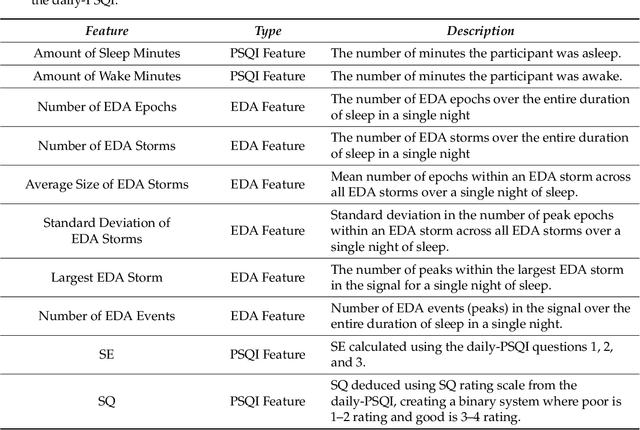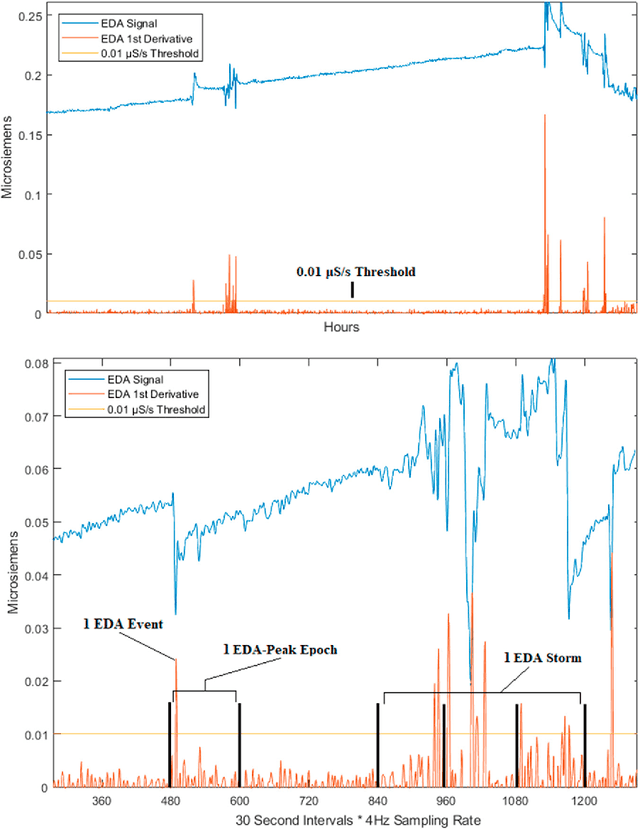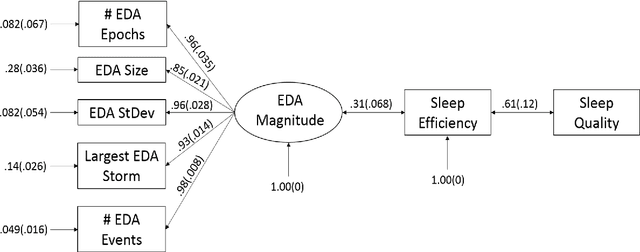Toward Sensor-based Sleep Monitoring with Electrodermal Activity Measures
Paper and Code
Jan 31, 2019


We use self-report and electrodermal activity (EDA) wearable sensor data from 77 nights of sleep on six participants to test the efficacy of EDA data for sleep monitoring. We used factor analysis to find latent factors in the EDA data, and causal model search to find the most probable graphical model accounting for self-reported sleep efficiency (SE), sleep quality (SQ), and the latent EDA factors. Structural equation modeling was used to confirm fit of the extracted graph. Based on the generated graph, logistic regression and naive Bayes models were used to test the efficacy of the EDA data in predicting SE and SQ. Six EDA features extracted from the total signal over a night's sleep could be explained by two latent factors, EDA Magnitude and EDA Storms. EDA Magnitude performed as a strong predictor for SE to aid detection of substantial changes in time asleep. The performance of EDA Magnitured and SE in classifying SQ showed promise for wearable sleep monitoring applications. However, our data suggest that obtaining a more accurate sensor-based measure of SE will be necessary before smaller changes in SQ can be detected from EDA sensor data alone.
 Add to Chrome
Add to Chrome Add to Firefox
Add to Firefox Add to Edge
Add to Edge